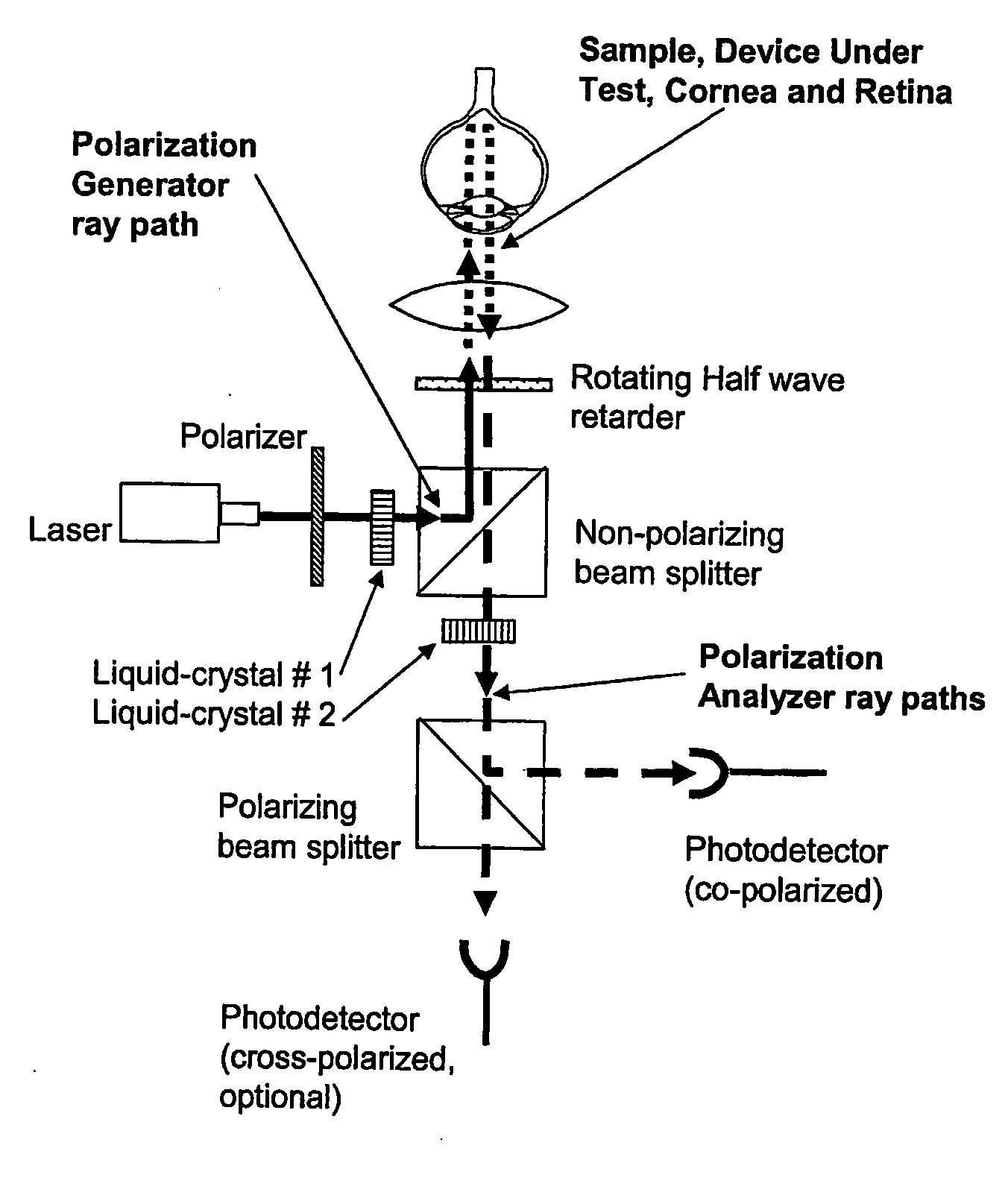Advanced polarization imaging method, apparatus, and computer program product for retinal imaging, liquid crystal testing, active remote sensing, and other applications
a polarization imaging and imaging method technology, applied in the field of advanced polarization imaging methods, apparatuses and computer program products for retinal imaging, liquid crystal testing, active remote sensing, etc., can solve the problems of poor image quality, poor contrast mechanism, and inability to detect changes easily, so as to improve classification and identification of defects
- Summary
- Abstract
- Description
- Claims
- Application Information
AI Technical Summary
Benefits of technology
Problems solved by technology
Method used
Image
Examples
Embodiment Construction
[0060] One cannot determine from a simple examination of a Mueller matrix how much depolarization the corresponding light / matter interaction causes because the change in the degree of polarization is a function of the incident polarization state. For most depolarizing light / matter interaction, some incident polarization states are depolarized more, and other states less. The invention provides new and useful ways of analyzing the variations of depolarization will reveal important characteristics of a sample.
[0061] Conventional systems and techniques are characterized by deficiencies of the Depolarization Index relative to describing the magnitude of depolarization. Here, a new depolarization metric is introduced as a single number which varies from zero to one to summarize the magnitude of depolarization of the light exiting a sample. This new metric is the Average Degree of Polarization or AverageDoP. The Average Degree of Polarization is calculated by integrating the DoP as the i...
PUM
 Login to View More
Login to View More Abstract
Description
Claims
Application Information
 Login to View More
Login to View More - R&D
- Intellectual Property
- Life Sciences
- Materials
- Tech Scout
- Unparalleled Data Quality
- Higher Quality Content
- 60% Fewer Hallucinations
Browse by: Latest US Patents, China's latest patents, Technical Efficacy Thesaurus, Application Domain, Technology Topic, Popular Technical Reports.
© 2025 PatSnap. All rights reserved.Legal|Privacy policy|Modern Slavery Act Transparency Statement|Sitemap|About US| Contact US: help@patsnap.com



